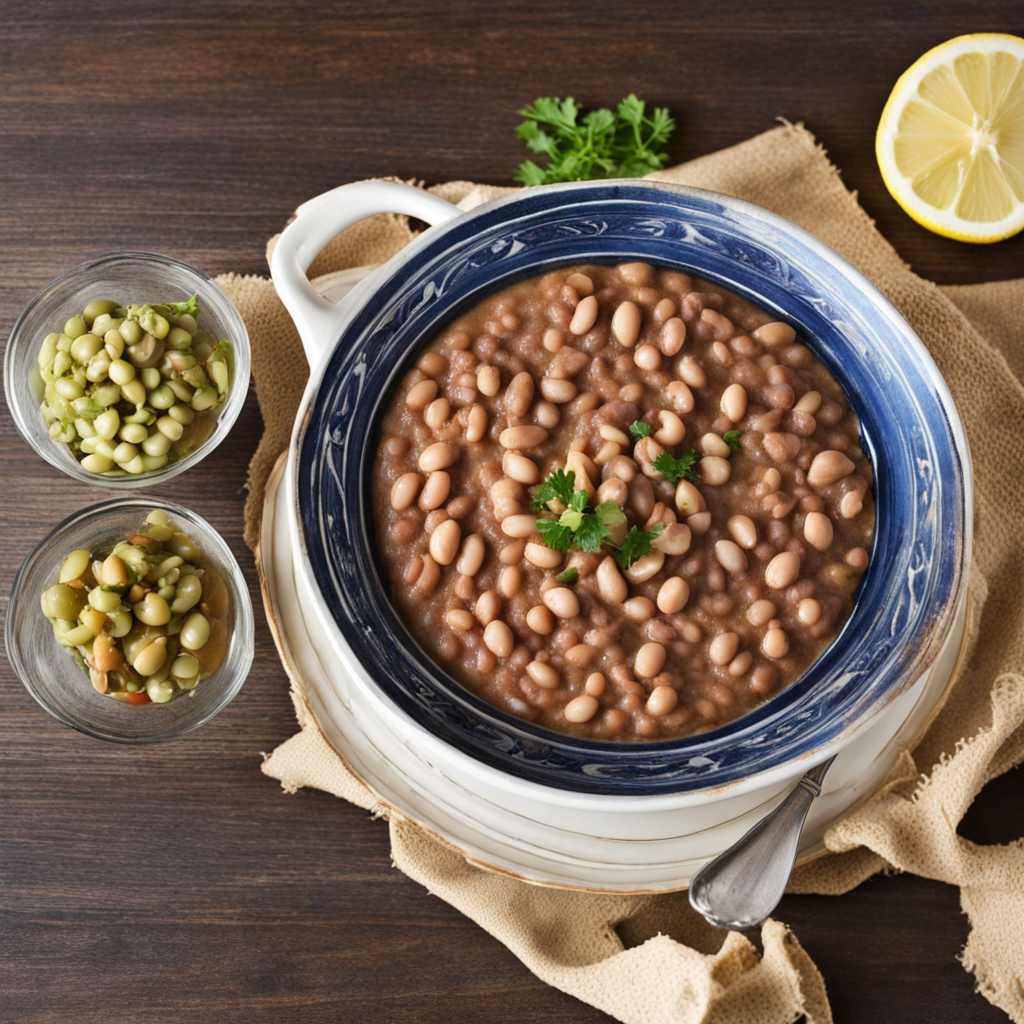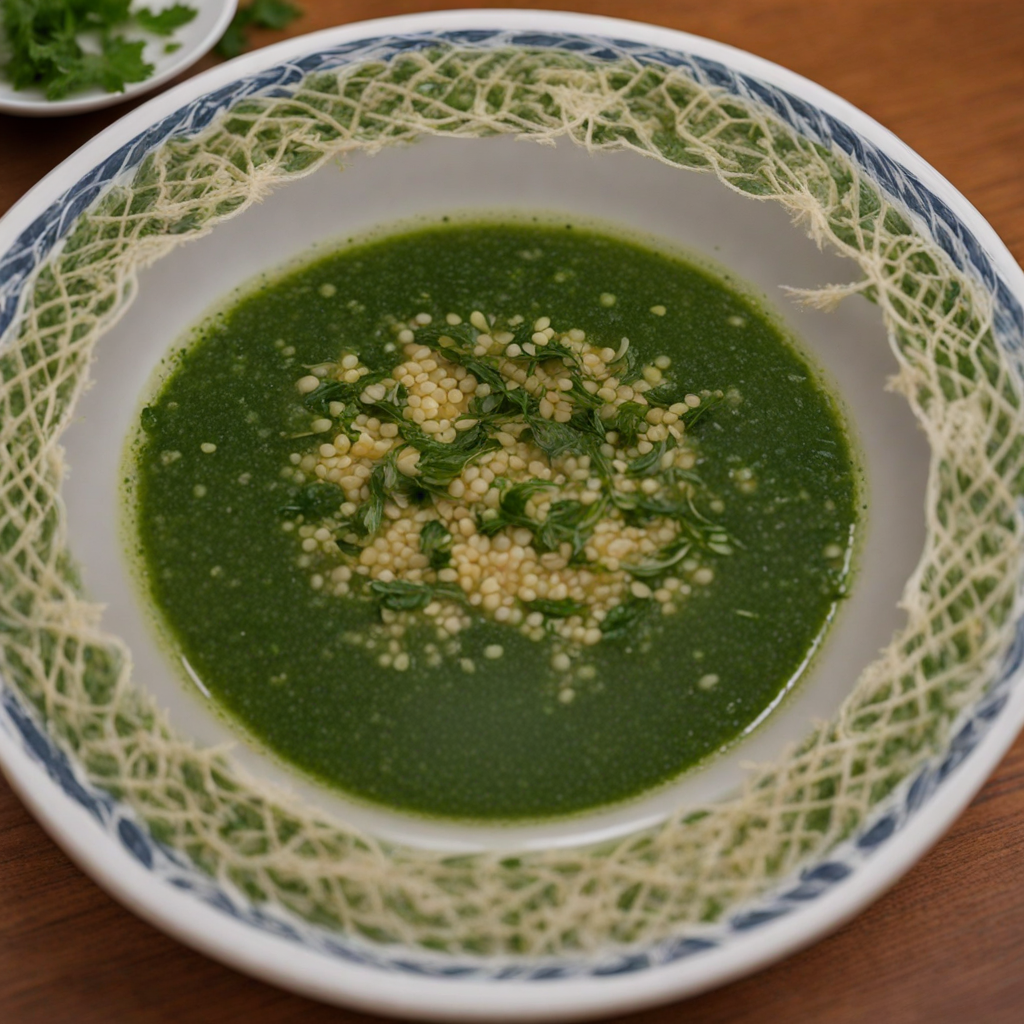Koshary
Koshary is a beloved Egyptian dish that beautifully marries a variety of flavors and textures, making it a comforting and hearty meal. This iconic street food consists of a base of rice and lentils, which are often topped with a generous portion of macaroni. The combination creates a filling and satisfying foundation that represents the essence of Egyptian cuisine's resourcefulness and creativity. The dish is typically served with a rich tomato sauce that is slightly tangy and spiced, enhancing the interplay of ingredients and providing a delightful burst of flavor with every bite. Complementing the rice, lentils, and macaroni are fried onions, which add a satisfying crunch and a hint of sweetness. The crispy texture contrasts beautifully with the soft, warm base of the dish. Additionally, Koshary is often garnished with a drizzle of garlic vinegar and a sprinkle of chili sauce, allowing diners to customize the heat and acidity to their liking. This interplay of flavors, from savory to spicy to tangy, creates a harmonious balance that captures the essence of Egyptian comfort food. What truly sets Koshary apart is its cultural significance and its ability to bring people together. Often enjoyed as a street food staple, it is a popular choice for both casual meals and special occasions. The dish exemplifies the heart of Egyptian hospitality, inviting friends and family to share in a communal dining experience. Whether enjoyed in a bustling market or a cozy home, Koshary is more than just a meal; it is a celebration of heritage, tradition, and the love of food that transcends borders.
How It Became This Dish
The History of Koshari: Egypt’s Culinary Icon Koshari, a beloved dish that epitomizes the essence of Egyptian street food, represents a rich tapestry of cultural influences, historical journeys, and culinary creativity. This hearty and filling dish, made from a blend of rice, lentils, macaroni, and topped with a zesty tomato sauce and fried onions, has become a symbol of national pride and a staple for many Egyptians. To understand its significance, we must delve into its origins, cultural resonance, and the evolution it has undergone over time. #### Origins of Koshari The origins of koshari can be traced back to the 19th century, a period marked by significant social and economic changes in Egypt. While the exact beginnings are somewhat unclear, it is widely believed that koshari was inspired by various culinary traditions brought to Egypt through the influences of different cultures, including Italian, Indian, and Ottoman cuisine. The dish is thought to have emerged during the time of the British occupation, when diverse populations coexisted in urban centers like Cairo and Alexandria. Street vendors began to create inexpensive meals that could feed the working class and the growing number of urban poor. Koshari's combination of easily accessible ingredients—rice, lentils, and pasta—made it an ideal choice for feeding large numbers of people. The dish was not only affordable but also filling, which resonated well with those looking for sustenance amid economic strife. Interestingly, the name "koshari" is believed to have derived from the Urdu word "khichri," a dish made from rice and lentils. This is indicative of the cross-cultural exchanges that occurred during the British colonial period. As people from various backgrounds interacted and shared their culinary practices, koshari evolved into a uniquely Egyptian dish. #### Cultural Significance Koshari is more than just a meal; it is a dish imbued with cultural significance and national identity. It reflects the resilience and adaptability of Egyptian society. Each ingredient in koshari tells a story of blending traditions and influences, creating a dish that is uniquely its own. In Egypt, koshari is often regarded as a comfort food, evoking feelings of nostalgia and familiarity. It is commonly consumed during Ramadan, the holy month of fasting, when families gather to break their fasts with hearty meals. The dish is also a popular choice for celebrations and gatherings, symbolizing unity and togetherness. Its affordability makes it accessible to all social classes, further solidifying its status as a national dish. The preparation of koshari is often seen as a communal activity, where families come together to cook and enjoy the dish. This communal aspect speaks to the broader cultural values of hospitality and togetherness that are deeply embedded in Egyptian society. Vendors selling koshari in the bustling streets of Cairo contribute to the urban landscape, adding to the city’s vibrant atmosphere. #### Development Over Time As Egypt's food culture evolved, so did koshari. The dish began to appear in various forms across the country, each region adding its own twist to the classic recipe. The basic components—rice, lentils, and macaroni—remained consistent, but the sauces and toppings varied, reflecting local tastes and preferences. In the mid-20th century, koshari began to gain popularity beyond its street food roots. It became a staple in restaurants, where it was often served with additional toppings such as chickpeas or spicy sauce. This evolution was part of a broader trend in Egypt during this time, as urbanization and modernization led to changes in eating habits. With the rise of cafes and restaurants, koshari found its place on menus, catering to a more diverse clientele. The rise of tourism in the late 20th century further contributed to koshari's prominence. As travelers sought to experience authentic local cuisine, koshari emerged as a must-try dish in Egypt. Food bloggers and culinary enthusiasts began to explore the dish, sharing its story and recipes online, which helped to internationalize koshari and introduce it to a global audience. Today, koshari is not only popular in Egypt but has also found its way into the hearts of food lovers around the world. Many restaurants outside of Egypt offer koshari, often adapting the dish to suit local tastes while maintaining its core elements. This international recognition has helped to elevate koshari as a symbol of Egyptian culinary heritage. #### Contemporary Koshari In recent years, koshari has also been at the forefront of discussions about food sustainability and local ingredients. With a growing awareness of the importance of using fresh and locally sourced products, many chefs and home cooks alike have taken a renewed interest in preparing koshari from scratch. This return to traditional methods is celebrated as a way to honor the dish's origins while also embracing the future of Egyptian cuisine. Social media has played a significant role in the resurgence of interest in koshari. Food influencers on platforms like Instagram and TikTok have showcased the vibrant colors and textures of koshari, encouraging a new generation to discover this dish. Recipes are shared widely, and variations are created, reflecting individual creativity while respecting the dish's traditional roots. #### Conclusion Koshari is more than just a dish; it is a culinary symbol of Egypt, representing the fusion of cultures, the resilience of its people, and the warmth of communal dining. From its humble beginnings as a street food to its status as a beloved national dish, koshari has evolved while remaining true to its essence. As Egypt continues to navigate the complexities of modern life, koshari stands as a reminder of its rich culinary heritage and the enduring power of food to bring people together. Whether enjoyed from a street vendor or in a family gathering, koshari embodies the spirit of Egypt and its vibrant food culture.
You may like
Discover local flavors from Egypt







